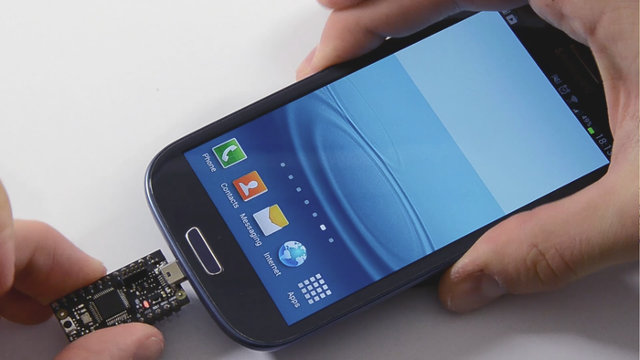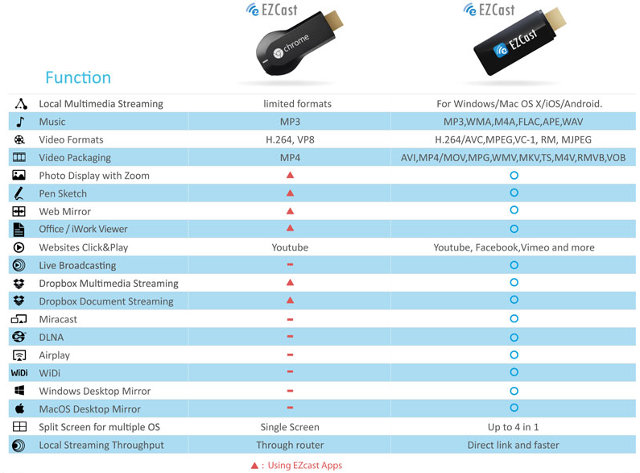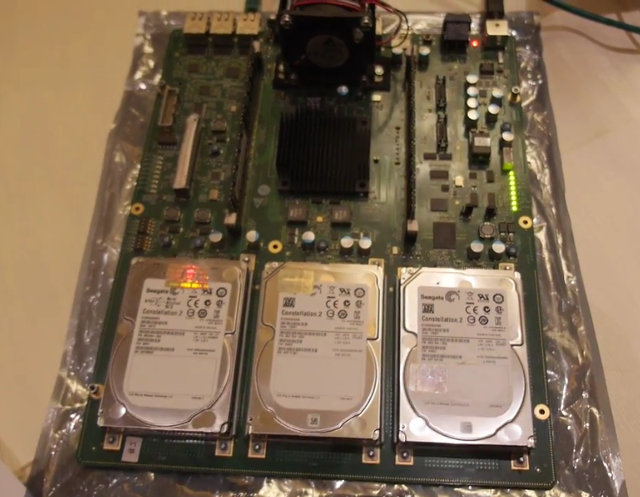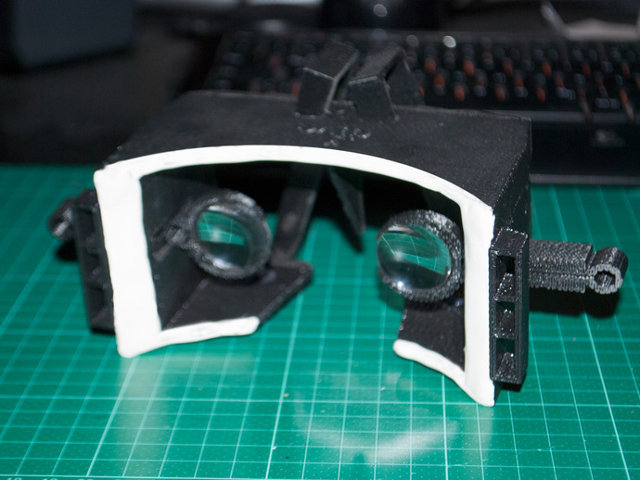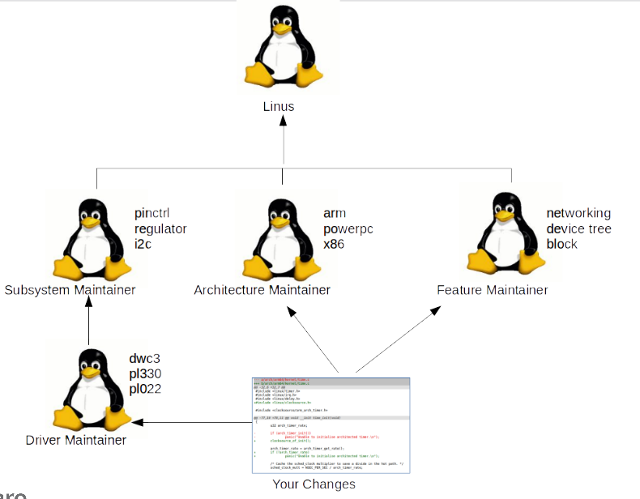Many MCU based development boards such as Arduino or mbed platform connect to a computer via USB for power and programming, at least during the development stage. USB2Go, however, is designed with a micro USB port to connect directly to your Android smartphone, although it can also be used for standalone project, and an Arduino compatible baseboard is also available. This board powered by an STM32 ARM Cortex M3 MCU is however mainly destined to interface hardware such as LED, servos, sensors to your smartphone via micro USB providing both power and a communication channel with your Android device. USB2Go hardware specifications: MCU – STMicro STM32 ARM Cortex M3 MCU @ 72 MHz with 128 KB Flash, 64 KB SRAM USB – Micro USB for power and programming Headers – 2x 12 pin headers giving access to GPIO, ADC, PWM, UART, I2C, SPI… Debugging I/F – JTAG 20-pin to SWD […]
Bluetooth Slide-out Keyboard Cases for Android Smartphones and iPhones
Yesterday, one reader told me he wished manufacturers would release high-end smartphones with a slide-out keyboard, something similar to what Asus has done with Eee Pad Slider SL101 or Archos with their 101 XS Tablet. So I had a look in case some Chinese manufacturers had done a phablet with a slide-out keyboard and Mediatek MT6588 or MT6592 SoC, but all I could find are some old 2011 or 2012 smartphones with Android 2.3 and low specs by today standards. If you own a best selling phone however such as the Galaxy S4, Galaxy S5 or iPhones, there are some cases with a Bluetooth slide-out keyboard that can add this functionality to your phone. The one pictured above is “QQ-Tech Ultra-Slim Slide-Out Detchable Multifunction Wireless Bluetooth Keyboard Case” for Samsung Galaxy S4 which you can find on Amazon for $23. The case comes with a micro USB cable to charge […]
EZCast App is Now Supported by ChromeCast
EZCast is a decent Wi-Fi display solution using a proprietary protocol to show your local or online content on your TV via EZCast HDMI dongles powered by Action Semi ATV SoC. I’ve already reviewed two devices with Tronsmart T1000 and WiDiCast EC-E2, and found it to be fairly good with Android devices, but not so good with Windows PCs. Since the release of GoogleCast SDK for the ChromeCast, some people have asked support for ChromeCast protocol in EZCast dongle. However, it’s my understanding the SDK does not allow ChromeCast emulation on other devices yet. So instead the EZCast team has ported the app to support ChromeCast, which means if you own a ChromeCast you don’t need to buy an EZCast dongle to play around with EZCast and access your local content. However, as you can see from the comparison tablet above,. EZCast for ChromeCast is not quite able to support […]
Huawei D01 Server Board Features 16 ARM Cortex A15 Cores with up to 64 GB RAM, 3 SATA, 2 GbE Ports
During Linaro 14.02 release, I noticed a Huawei D01 board with 16 ARM Cortex A15 core, but details were lacking. Charbax was a Linaro Connect Asia earlier this month, and he could film the board in action, and interview the development team about this server board, and software development. Huawei D01 specifications: Processor HiSilicon SoC with16 x ARM Cortex-A15 CPU Core @ max. 1.5GHz (up to 84000 DMIPS) Support for CPU configuration as AMP/SMP Configurable Big or Little endian. Default: Little endian System Memory – 2x 64bit DDR3 DRAM Dual Inline Memory up to 1600 MHz, Module(DIMM) sockets:(2)&(3) . Default capacity: 8GB, upgradeable to 64GB Storage – 2x 1Gb NOR Flash, 2x 512MB NAND Flash, 3x SATA III for 2.5″ hard drives or SSD, 1x SD card Connectivity – 2x 10/100/1000Mbit/s Gigabit Ethernet ports, 1x 10/100Mbit/s FE port Other Peripheral Interfaces 2x USB 2.0 Host ports 2x UART, 4x I2C, […]
Opendive – Low Cost DIY Open Source 3D Virtual Reality Kit for Smartphones
About 10 days ago, I wrote about solution to record and play 360 degrees panoramic videos. One of the itmen was vrAse virtual reality case for your smartphone, and allows you to enjoy immersive 3D experience. If you’d rather do your own, than buy a kit for about 100 Euros, there’s an open source project called OpenDive that does about the same thing, and allows you to play games in 3D. All you need to do is to download the 3D files, print the head-mounted glasses it with your 3D printer, and buy the lense kit (6.99 Euros) to get a complete working system. You may have to modify the design, and adapt it to your phone dimensions. And if you don’t have a 3D printer, somebody provided instructions to do your own by cutting wood or plastic sheets. You then should be able to watch 360 deg. panorama videos, and […]
Selecting the Best Adobe Flash Player in Linux for x86 and ARM
I’ve had countless and recurrent crashes caused by Adobe flash plugin either in Firefox and Chromium, mainly while playing videos from YouTube or other online video services that still mostly use flash, instead of HTML5. Adobe flash death is certain, but up to now it has been soooo slow, so I doubt that thing will truly die any time soon, and unfortunately it will probably be with us for many years to come. To work around the issue, I started by enabling Youtube HTML5 player, and try to play embedded videos inside YouTube instead of the orignal website. I still had crashes from time to time, and this method did not help with other video services. So I decided to check out what I could do to fix the issue. When you go to http://www.adobe.com/software/flash/about/ you can check your flash version, and Adobe will also list the player version for […]
Linux Kernel Upstreaming How-To – Linaro Connect Asia 2014
I’ve already written a post about submitting kernel patches to mainline based on a 2011 presentation by Greg Kroah-Hartman, but Matt Porter, Broadcom Landing Team (LT) Technical Lead at Linaro, has given two updated talks entitled “Upstreaming 101” and “Upstreaming 201” at Linaro Connect Asia 2014. There are many planned talked during LCA 2014, and you can get the list as well as links to presentation and videos, as they become available on LCA 14 resources page. The first session “Upstream 101” starts with some definitions such as “upstreaming” (basically getting your code to kernel.org), “mainline”, etc, explains how to get information about the (912) maintainers (tip: it’s in the MAINTAINERS file), how to deal with the 2-week merge windows occurring every 10 weeks or so, but the bulk of the talk detailing the work flow required to upstream code to the Linux kernel. There are basically 5 steps: Preparation – Read […]
Linaro Connect Asia 2014 Opening Keynote – Status and Future of ARMv8 Linux & Android [Video]
Linaro Connect Asia 2014 has just started in Macau today and will take place until Friday. You can follow the sessions live and/or their recordings via Linaro OnAir YouTube Channel. I’ve watched the opening keynote, and embedded the video at the bottom of this post. The keynote focuses on ARMv8 for Linux and Android on servers, mobile devices, digital home, and more, and involves two main speakers: George Grey, Linaro CEO , and Jon Masters, Chief ARM Architecture at Red Hat. The speaker beginning of the video provides some practical information and the schedule for Linaro Connect. The keynote itself really starts around 15:50 with George Grey who spends the first 10 minutes introducing the latest Linaro members: Qualcomm, Mediatek, ZTE, AllWinner and Comcast. He then talks about the new Mobile sub-committee (MOBSCOM) that will focus on big.LITTLE, Android optimization and Android on ARMv8, as well as the soon-to-be-announced Linaro […]


